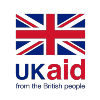The CLARISSA Social Protection Intervention was set us as an innovative social policy intervention for tackling social ills, with a focus on assisting families with children caught in the worst forms on child labour. The scheme includes unconditional cash transfers to the community, which are delivered via ‘Upay’, a renowned mobile money provider.
To ensure transparency, accountability, and the overall effectiveness of the cash transfer intervention, robust complaint and feedback response mechanisms were established from the outset of the intervention. This early introduction promotes open communication and problem-solving, enabling participants to voice concerns, provide feedback, and seek redressal throughout the intervention.
The importance of a hotline
A successful complaint and feedback system relies on both reactive (hotline, feedback box) and proactive (community consultations, workshops, on-site observation) channels to gather input from participants. Often with such schemes, participants are faced with challenging and time-consuming hurdles such as long waiting hours and complicated procedures. Previous cash transfer interventions demonstrated that implementing a hotline number has been proven to simplify the process. The inclusion of the hotline number on communication materials also further enhances accessibility. The below quotes from participants reflects its benefits:
“The hotline number made it incredibly easy to voice my concerns. I felt heard and valued throughout the process.” (Female, 46, Hazaribagh)
“I never realised how useful those stickers and cards with the hotline number could be until I needed them. When I had an issue with cash disbursement in February, I simply dialed the number on the card, and to my surprise, I was connected to someone who was genuinely interested in helping me, and the issue was solved within the shortest delay. In my experience, the whole complaint process is so much easier and more efficient.” (Male, 40, Hazaribagh)
The hotline number serves as a direct link between participants and the program implementation team, enabling individuals to report problems, ask questions, or offer suggestions. This ensures that communication remains accessible and encourages open dialogue between participants and the implementing team.
Ensuring trust and transparency among participants
To streamline the process further, having a dedicated focal person responsible for managing complaints and feedback can significantly enhance the effectiveness of the mechanism. This individual acts as a bridge, coordinating between beneficiaries, field teams, and senior management. Their role involves not only receiving and documenting complaints but also ensuring timely and appropriate responses. This ensures trust and transparency among the participants as the process instils confidence about grievances being heard and acted upon. Maintaining confidentiality and ensuring anonymity is vital to create a safe environment where beneficiaries can freely voice concerns and address issues without fear of reprisal. In the reflection session, a participant recounted their experience with the response mechanism, stating:
“So far, I have submitted two complaints, and I have seen other participants submit complaints. All I have seen is that the complaints are taken seriously and that the relevant authorities act promptly to address the issues. It has made the whole process much more transparent and efficient.” (Male, 37, Hazaribagh)
Capacity building through training and reflection sessions are essential components to ensure that both participants and staff understand the complaint and feedback process. Participants should be educated about how to use the hotline number and other channels, the role of the focal person, and the types of issues they can report. Similarly, programme staff need training in actively listening to complaints, documenting them accurately, and following the established procedures for resolution. All complaints, feedback, and resolutions should be systematically recorded and documented. This documentation not only aids in tracking trends and identifying recurring issues but also supports accountability and transparency. Ultimately, a well-structured complaints and feedback response mechanism reinforces the programme’s commitment to the well-being of those it serves and strengthens the bonds between stakeholders.
CLARISSA’s approach and lessons learnt
From January to June 2023, the CLARISSA Social Protection intervention established a robust system for receiving and addressing complaints and feedback through various channels, including a hotline, feedback box, and in-person reporting. During this period, the intervention successfully resolved a total of 115 complaints. These issues spanned a wide range of concerns, such as inquiries about exclusion from the intervention, requests for access to cash transfer assistance, issues with Upay pin numbers, and difficulties verifying account numbers. Additionally, some feedback expressed gratitude for the disbursement of funds, confirmed account openings, and sought information about the next month’s payment date.
The lessons learnt and recommendations generated from this complaints and feedback response mechanism highlighted the significance of feedback systems. They serve as essential tools for identifying instances of fraud, errors in payment distribution, or duplicate benefits. Timely resolution of these issues is crucial for minimizing the risks associated with fraud, corruption, and conflicts of interest, ensuring the efficient utilization of funds. Furthermore, feedback data provides a foundation for making evidence-based decisions in program management. Program managers can utilize this information to inform choices related to program design, implementation, and resource allocation.
Moreover, gathering feedback directly from recipients empowers them to voice their concerns and preferences, fostering a sense of ownership and dignity within individuals and communities. This approach also respects the rights and agency of beneficiaries, ultimately promoting transparency and accountability in the aid process.
